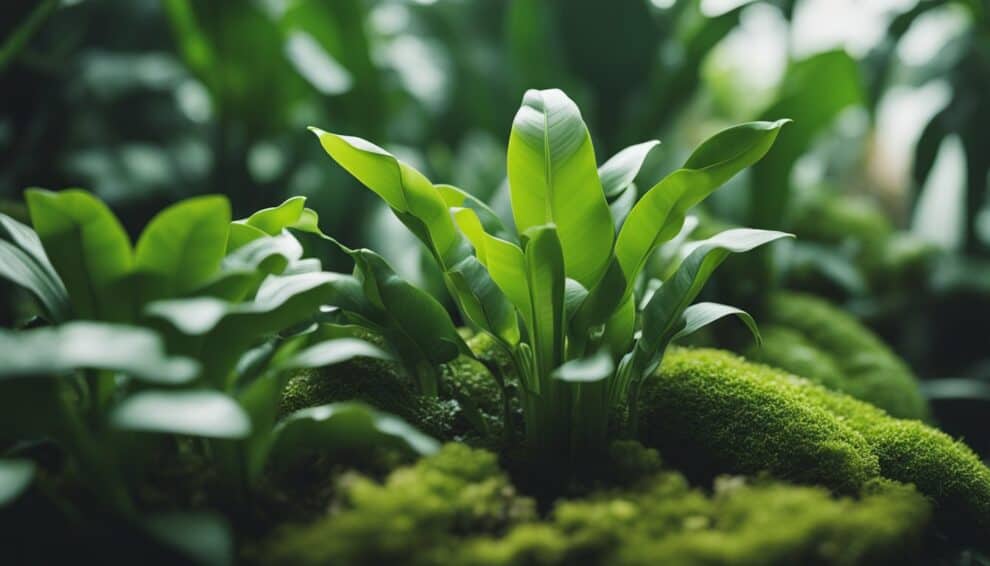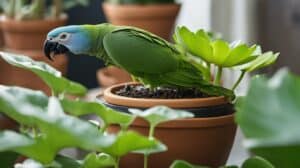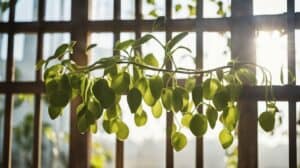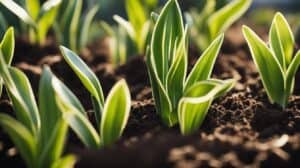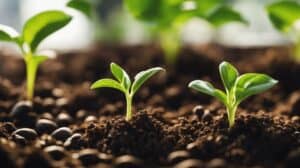Growing plants at home has become a popular trend in recent years, and dwarf banana plants are a great addition to any mini jungle.
Not only do they add a touch of tropical beauty to the home, but they also produce delicious fruit.
However, many beginners are intimidated by the idea of propagating their own dwarf banana plants.

Fortunately, propagation is not as difficult as it may seem. With the right tools and techniques, anyone can successfully grow their own dwarf banana plant.
In this article, we will explore the basics of dwarf banana propagation, including the materials needed, the steps involved, and tips for ensuring success.
Whether you’re a seasoned gardener or a beginner, you can learn how to propagate your own mini jungle at home with ease.
Understanding Dwarf Banana Plants
Characteristics of Musa Acuminata
Dwarf bananas, also known as Musa Acuminata, are a popular choice for indoor gardening due to their compact size and easy maintenance.
These plants typically grow to a height of 6 to 8 feet and produce small, sweet bananas that are perfect for snacking.
One of the key characteristics of Musa Acuminata is its ability to adapt to a wide range of growing conditions.
These plants thrive in warm, humid environments and can be grown in a variety of soil types.
They also require regular watering and fertilization to ensure healthy growth.
Benefits of Growing Dwarf Bananas Indoors
Growing dwarf bananas indoors has several benefits. For one, it allows you to enjoy fresh, homegrown bananas year-round, regardless of the weather outside.
Additionally, these plants can help purify the air in your home by removing harmful toxins and producing oxygen.
Another advantage of growing dwarf bananas indoors is that they require very little space.
These compact plants can be grown in pots or containers and are ideal for small apartments or homes with limited outdoor space.
Plus, they add a touch of tropical beauty to any indoor space, making them a popular choice for home decor.
In summary, Musa Acuminata is a versatile and easy-to-grow plant that offers a variety of benefits for indoor gardeners.
With a little bit of care and attention, you can enjoy fresh, homegrown bananas and a touch of tropical paradise in your own home.
Getting Started with Propagation

Choosing the Right Plant
Before starting the propagation process, it is important to choose the right plant.
The dwarf banana (Musa acuminata) is a great choice for beginners as it is easy to propagate and maintain.
It is also a great addition to any home as it adds a touch of greenery and can produce fruit in the right conditions.
When choosing a plant, it is important to look for one that is healthy and disease-free.
Check the leaves for any signs of damage or discoloration, and make sure the plant has a strong root system.
It is also important to choose a plant that is at least two years old, as younger plants may not be mature enough to produce fruit.
Propagation Materials Needed
To propagate a dwarf banana plant, you will need a few materials. These include:
- Sharp scissors or pruning shears
- A clean, sharp knife
- Rooting hormone
- A small pot or container
- Potting soil
- Water
It is important to use clean and sharp tools to prevent the spread of disease.
Rooting hormone is also important as it helps to stimulate root growth and increase the chances of successful propagation.
Once you have all the necessary materials, you can begin the propagation process.
With proper care and attention, you can successfully propagate a dwarf banana plant and enjoy the beauty and benefits of a mini jungle in your own home.
Propagation Techniques

Soil Preparation
Before starting the propagation process, it is important to prepare the soil. The soil should be well-draining and rich in nutrients.
A mixture of peat moss, perlite, and vermiculite can be used to prepare the soil. The soil should be moist, but not waterlogged.
Plant Division Method
One of the easiest ways to propagate the dwarf banana plant is through plant division.
This method involves separating the pups or suckers from the mother plant. The pups should have at least three leaves and a healthy root system.
It is important to use a sharp and sterile knife to avoid damaging the plant. The separated pups can be planted in a pot with prepared soil.
Seeding Method
Another method for propagating the dwarf banana plant is through seeds. The seeds should be soaked in warm water for 24 hours before planting.
The soil should be moist and the seeds should be planted about 1 inch deep. It is important to keep the soil moist and warm for the seeds to germinate.
The seedlings can be transplanted to a larger pot once they have grown a few leaves.
Overall, propagating the dwarf banana plant is a simple process that can be done by beginners.
With proper soil preparation and the right propagation techniques, anyone can have a mini jungle at home.
Aftercare for Dwarf Banana Plants

Watering and Feeding
Watering is crucial for the growth of dwarf banana plants. The soil should be kept moist but not waterlogged.
Overwatering can cause root rot, while underwatering can lead to stunted growth and yellowing of leaves.
A good rule of thumb is to water the plant when the top inch of soil feels dry to the touch.
In terms of feeding, dwarf banana plants are heavy feeders and require regular fertilization.
A balanced fertilizer with equal parts nitrogen, phosphorus, and potassium can be applied every two weeks during the growing season.
Avoid fertilizing during the winter months when the plant is dormant.
Pruning and Maintenance
Pruning is important to maintain the size and shape of the plant. Any dead or damaged leaves should be removed immediately.
Additionally, the removal of suckers (small shoots that grow from the base of the plant) can help promote the growth of the main stem.
Dwarf banana plants require a warm and humid environment. Regular misting can help increase humidity levels around the plant.
It is also important to keep the plant away from cold drafts and direct sunlight.
Pest and Disease Management
Dwarf banana plants are susceptible to pests such as spider mites and mealybugs.
Regular inspection can help detect any signs of infestation, and insecticidal soap or neem oil can be used to control the pests.
In terms of diseases, fungal infections such as leaf spot and crown rot can occur if the plant is overwatered or exposed to high levels of humidity.
Proper watering and ventilation can help prevent these issues.
If the plant does become infected, removing any affected leaves and applying a fungicide can help control the spread of the disease.
Frequently Asked Questions

What are the steps to propagate a dwarf banana plant from a cutting?
To propagate a dwarf banana plant from a cutting, you will need a healthy and mature plant. Cut a stem from the mother plant that has at least one node.
Remove all the leaves except for the top two or three. Dip the cut end in rooting hormone and plant it in a pot filled with well-draining soil.
Water the plant and keep it in a warm and humid place until it establishes roots.
How can I grow a dwarf banana tree indoors successfully?
To grow a dwarf banana tree indoors successfully, you need to provide it with bright, indirect light, high humidity, and warm temperatures.
Use well-draining soil and water the plant regularly to keep the soil moist but not waterlogged.
Fertilize the plant with a balanced fertilizer every two weeks during the growing season.
What is the ideal environment for a dwarf banana plant to thrive?
The ideal environment for a dwarf banana plant to thrive is a warm and humid place with bright, indirect light.
The plant prefers well-draining soil that is kept moist but not waterlogged. It also requires regular fertilization during the growing season.
Can you propagate a banana plant from the fruit itself?
No, you cannot propagate a banana plant from the fruit itself. The fruit contains seeds, but they are sterile and cannot be used to grow a new plant.
To propagate a banana plant, you need to use a stem cutting from a mature and healthy plant.
What are the care requirements for a dwarf Cavendish banana tree?
The care requirements for a dwarf Cavendish banana tree are similar to those of other dwarf banana varieties.
The plant needs bright, indirect light, high humidity, and warm temperatures to grow well.
It also requires well-draining soil that is kept moist but not waterlogged.
Fertilize the plant every two weeks during the growing season with a balanced fertilizer.
At what height does a dwarf Cavendish banana tree typically max out?
A dwarf Cavendish banana tree typically maxes out at about six feet in height.
However, the height can vary depending on the growing conditions and the care provided to the plant.






